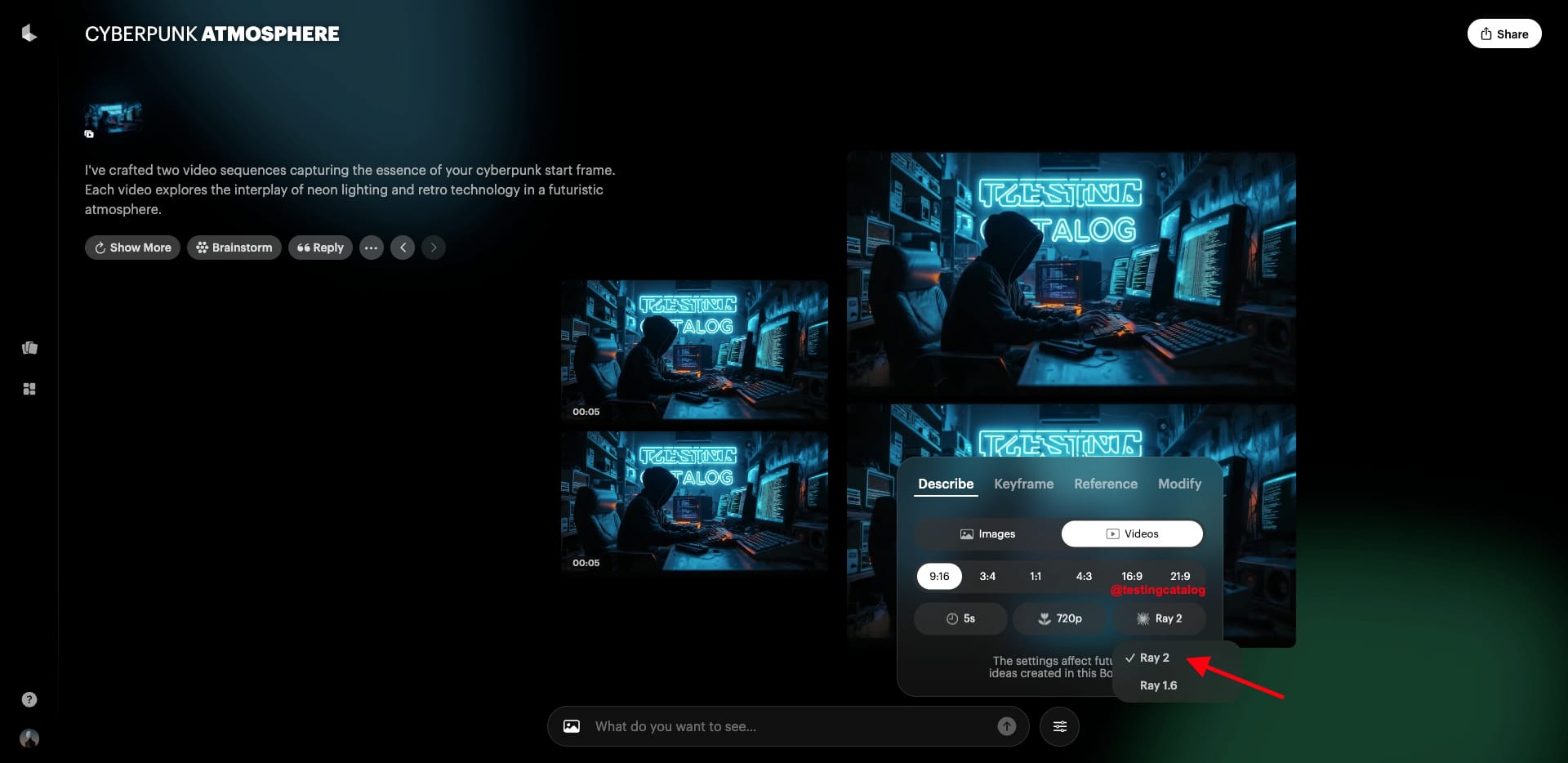Luma AI is reportedly testing a new text-to-video model called "Ray-2," which supports 1080p resolution and video durations of up to 20 seconds. This model builds upon its predecessor, Ray-1 (also known as Dream Machine 1.6), and is currently accessible to select creators. A broader launch is speculated to occur as early as next week, though this has not been officially confirmed.
Leaked Features
The "Ray-2" model represents an advancement in AI-driven video generation, enabling users to create visually detailed videos from text prompts. The support for full HD (1080p) resolution and longer video durations (20 seconds) marks a significant improvement over earlier iterations, which may have been more limited in output quality or length. A teaser preview of the model has been shared, showcasing its capabilities, though specific details about its performance and limitations remain undisclosed.
BREAKING 🚨: Luma is testing a new text-to-video model "Ray-2" with support for 1080p and 20 seconds videos 🔥
— TestingCatalog News 🗞 (@testingcatalog) January 10, 2025
The preview teaser looks incredible, and this model is already available to some creators.
Launch next week? 👀
* DM1.6 is Ray-1 https://t.co/BubRQ7XCZ4 pic.twitter.com/6lC4jECiM5
About Luma Labs
Luma AI is a company focused on leveraging artificial intelligence for creative tools, particularly in the domain of video and media production. The development of "Ray-2" aligns with industry trends emphasizing generative AI's role in content creation. Luma's strategy appears to target both professional creators and casual users looking for accessible tools to produce high-quality multimedia content.
Context and Implications
If released widely, "Ray-2" could significantly impact industries such as marketing, entertainment, and social media by simplifying the process of generating high-quality video content. The ability to create longer and higher-resolution videos expands its utility for creators seeking to produce professional-grade outputs without extensive resources or technical expertise.
The timeline for the official release remains uncertain, but the mention of a potential launch next week suggests that Luma may be finalizing the testing phase. This development underscores the rapid evolution of generative AI technologies and their growing integration into creative workflows.






